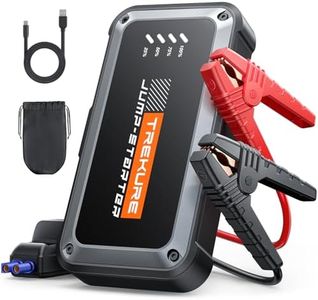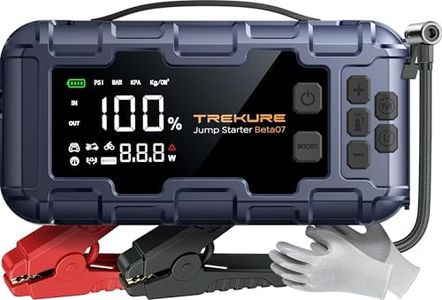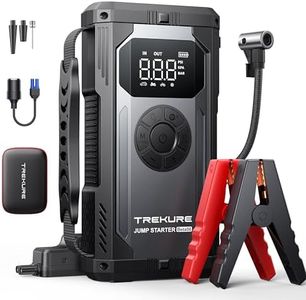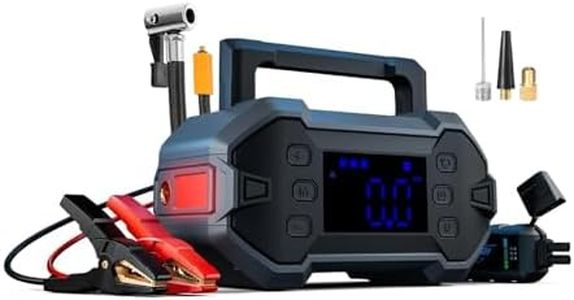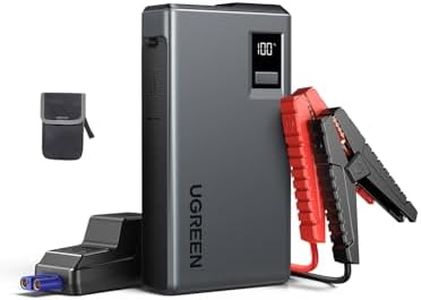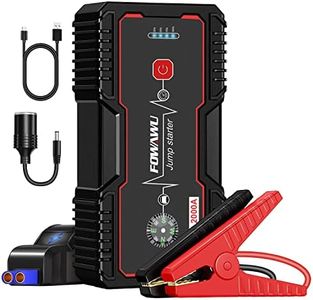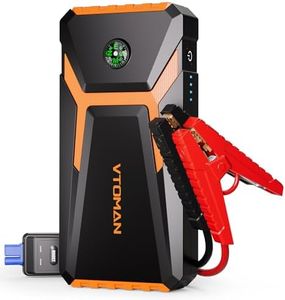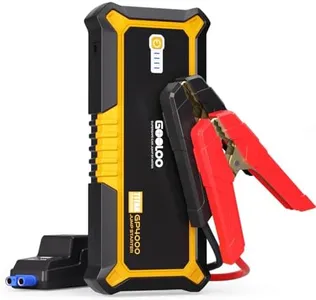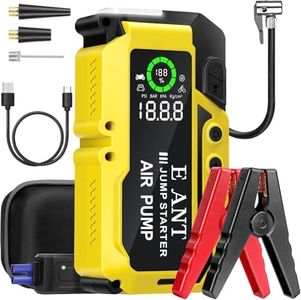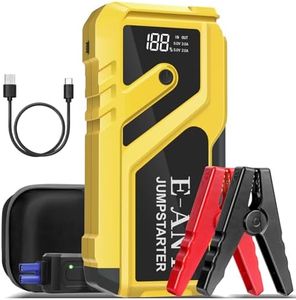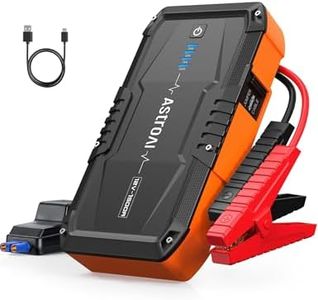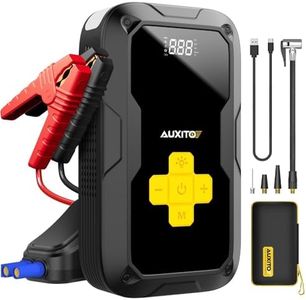We Use CookiesWe use cookies to enhance the security, performance,
functionality and for analytical and promotional activities. By continuing to browse this site you
are agreeing to our privacy policy
10 Best Battery Jump Box
From leading brands and best sellers available on the web.Buying Guide for the Best Battery Jump Box
Choosing a battery jump box (also known as a jump starter or booster pack) can be overwhelming with so many models and features available. A jump box is a portable device designed to jump-start a car battery without the need for another vehicle. To pick the right one, it’s important to think about the type of vehicles you’ll be using it with, how often you intend to use it, and any additional features you might find handy. Understanding the key specifications will help ensure your jump box will reliably start your car when you need it most.Peak AmpsPeak amps refer to the maximum burst of electrical current the jump box can provide when starting a vehicle. This is important because different engines need different amounts of power to start. Smaller engines (like those in compact cars or motorcycles) usually require less amps, typically in the 400-600 range. Larger engines—such as those in SUVs, trucks, and diesel vehicles—may need 1000 amps or more. To pick the right value for you, check your vehicle’s engine size and type; it’s best to choose a jump box that meets or exceeds your vehicle manufacturer’s starting current recommendation.
Cranking AmpsCranking amps indicate how much power the jump box can provide for a sustained period (typically measured over 30 seconds) to turn over an engine. This is often less than peak amps but is a more realistic measure of how well the device performs for actual starting. If you live in colder climates or have older batteries, look for a jump starter with higher cranking amps to ensure reliable performance. Choose one with a value that suits the worst-case temperature and condition you might encounter.
Battery Capacity (mAh or Wh)Battery capacity tells you how much energy the jump box can store, often measured in milliamp-hours (mAh) or watt-hours (Wh). A higher capacity means the jump box can attempt more jump starts before needing a recharge and may support charging phones or other devices. If you plan to carry your jump box for emergencies or road trips, a higher capacity model provides more peace of mind, while lower capacities are suitable for casual or occasional use.
Portability and SizeThe size and weight of the jump box matter if you’ll be carrying or storing it in your vehicle. Larger, heavier units usually provide more power but take up more space and can be cumbersome to handle. Compact units are easier to store and convenient but may offer lower amperage or capacity. Consider your storage space and how much physical effort you’re willing to make when using the jump box.
Safety FeaturesSafety features like reverse polarity protection, spark-proof technology, and short-circuit protection keep both you and your vehicle safe during use. These features help prevent accidents if the clamps are connected incorrectly or if there’s a sudden surge of electricity. Always look for a jump box with robust safety protections, especially if you’re unfamiliar with handling car batteries.
Additional FeaturesMany jump boxes come with extras such as built-in flashlights, USB charging ports, air compressors, or digital displays. These can add convenience, especially if you want an all-in-one roadside emergency tool. Think about which features are practical for you—if you just want a basic jump starter, extras may not be necessary, but for frequent travelers, additional functions can be valuable.
